originally posted at https://canmom.tumblr.com/post/641581...
Hey there friends! It’s time for Animation Night again. Still not gotten round to filling in last week’s Lupin post, but it’ll come. Anyway…
Well, the last many months, we’ve been working our way down the list of big name anime auteurs - and it’s time for this guy!
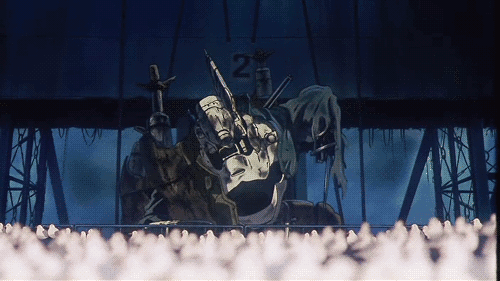
Mamoru Oshii is surely best known for his famous film adaptation of Masamune Shirow’s Ghost in the Shell, but that’s actually something I’m gonna be saving for next week when we’ll be doing a dive (off the rooftops) into that franchise. Instead, this week I want to share some of Oshii’s various other films, bc they can be quite a mood!
So, from the top! It probably explains a lot to note that Oshii grew up watching a lot of artsy European films by people like “Federico Fellini, Ingmar Bergman, Michelangelo Antonioni and Jean-Pierre Melville” (thanks WP). He went into anime storyboarding pretty much straight out of uni in the 70s, working on fairly minor baseball anime; the break came in 1981 where he joined Studio Pierrot to work on the scifi romcom series Urusei Yatsura, especially the second film where he started to indulge in time loop plots and pouring the philosophy juice.
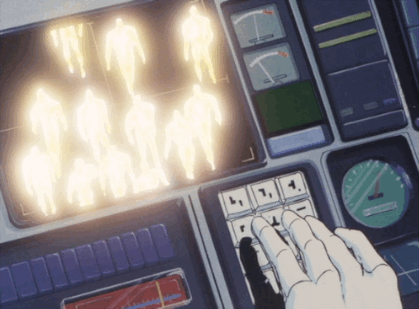
While scifi movies would turn out to be the niche that best suited Oshii, his first step away from TV anime was to try a new format for anime: Dallos (1983-4) was the very first OVA, which is startling considering how quickly the format took off by the end of the 80s. You can read someone’s very detailed plot summary here; according to that guy, it was left frustratingly unfinished after four episodes, and the story wasn’t a great deal to write home about, hence largely forgotten beyond the ‘first OVA’ footnote.
Oshii, meanwhile, had a much more exciting plan - he was planning a Lupin III film. From the sounds of things, what he had in mind was a sort of cyborg-filled, GitS-like take on Lupin, but the premise was too weird for Tōhō and Yomiuri; having heavily advertised Oshii as the director (I guess he was already a ~marketable name~ back then?) they decided to just cancel the film! Tragic honestly, I’d love to see an Oshii take on Lupin, that would be fucking wild.
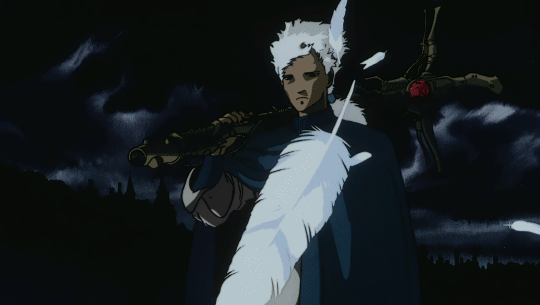
Oshii took the ideas with him, and instead went ahead to direct one of his first really personal films: Angel’s Egg, at Studio Deen (not one familiar to me, but they seem to be a v long running studio who’ve worked on quite a bit of high profile stuff including Ranma, the first Fate anime, and the Higurashi/Umineko adaptations).
This is where we hit the art, or if you prefer, vibes, that Oshii is known for! Angel’s Egg is almost wordless, full of surreal, frequently biblical imagery and gorgeous Yoshitaka Amano character design. The plot is kind of abstract, but broadly, a soldier boy is wandering a strange empty land where armies fight shadow fishes; one day he encounters a girl with a giant egg, who asks him not to break it… and the egg remains totally fine and definitely does not get broken at some later point in the film no way 🙃

Oshii had grown up Christian, but while making this film, he became disillusioned with his religion, and well it’s not a stretch to see that getting metaphorised in the film! But while this is the usual angle taken by critics, Oshii has himself refused to give a specific interpretation of the film. In any case, here we see the onset of certain images that would recur throughout Oshii’s films: fossils and extinct animals, military imagery of soldiers locked into aimless tasks…
Following Angel’s Egg, whose producer Toshio Suzuki was among the founders of Ghibli, Oshii briefly collaborated with Miyazaki and Takahata towards a film that would be called Anchor, only to fall out over some kind of vague creative differences. Instead, it was time for the ‘militarised police force’ era of Oshii’s career!
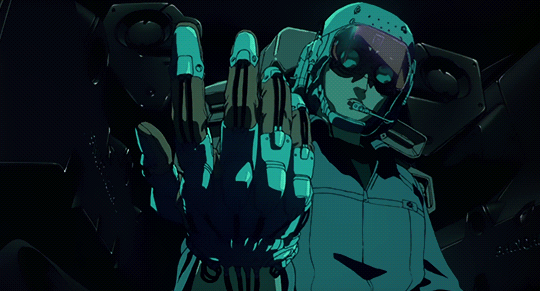
Joining a small creative collective called Headgear at the invitation of his friend, screenwriter Kazunori Itō, Oshii would spend the next few years on two parallel strands: the extremely down-to-earth mecha series Patlabor, imagining the cops of a near-future setting where mechas are ubiquitous and not always reliable; and the mostly live-action Kerberos series, which grimly imagines a future where Japan went full fash again, creating a specialist police force in blatantly SS-inspired gear who end up going rogue.
I’ve seen the first Patlabor film some time ago, and a lot of it is like, squad room shenanigans, though it has some very impressive action scenes at the end on a collapsing artificial island. We can certainly trace some of its influences to events at the time - like with Akira, there is for example the Tokyo housing bubble taking place in the 80s, which is in the film transformed into literal hopeless attempts to construct artificial islands. Machinery runs amok in civilian neighbourhoods, etc. etc. It saw the beginning of Oshii’s long collaboration with composer Kenji Kawai, though not yet at the heights of his GitS soundtrack!
But it’s the second Patlabor film is the one which seems to be best known: Patlabor 2 (1994) saw Oshii work with the renowned Production I.G., and things more geopolitical, imagining a conflict between different branches of the JSDF stemming ultimately from a failed ‘peacekeeping’ mission in Cambodia which turns a military commander against the political authorities. (In real life, Japan sent police forces along with a number of other countries under the UN to Cambodia in the aftermath of the Cambodia-Vietnam war as ‘peacekeepers’ in the early 90s, so that would have been pretty fresh in the news.)
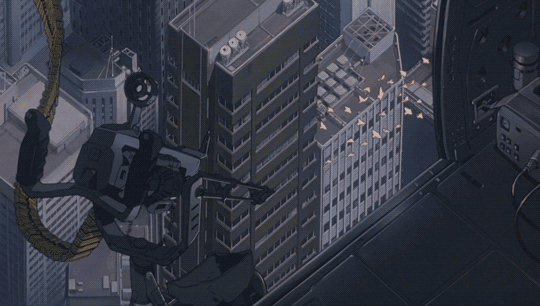
This leads to some remarkable scenes of martial law being imposed and tanks rolling through Tokyo while the civilian population sits by. Looking for more background to this, I came across this interview with an American magazine; Oshii describes his intent as reflecting Japan’s role in the cold war:
OSHII: I think it may be difficult for Americans to understand. The story is really based on political programs that exist in Japan, so it has quite a few deep meanings within it. In Patlabor 2, I wanted to describe the Cold War for Japan. It was a war, but a silent war. When the Cold War existed between the U.S. and Russia, the “stance” of Japan was not to be directly involved. Even though Japan was involved, it kept insisting for fifty years that it wasn’t. I wanted to describe that fake peace.
To contextualise a bit - in the years after their defeat by America in WWII, Japan signed a number of defence treaties making them an ally of the United States and letting the US maintain military bases their, pretty much perpetually, though not without significant protest against further alignment with the US in the cold war. For their own part, article 9 of the post-war constitution, Japan renounced the ‘right to belligerency’ and prohibited maintaining an army. In practice, though, they have a developed pretty big one, and were a close ally of the US in e.g. providing logistical support for Vietnam and deploying troops through the UN in ‘peacekeeping’ operations. Yet officially, Article 9 still applies, and is (to my understanding) considered quite important; wanting to revoke it is a pretty hardline nationalist position.
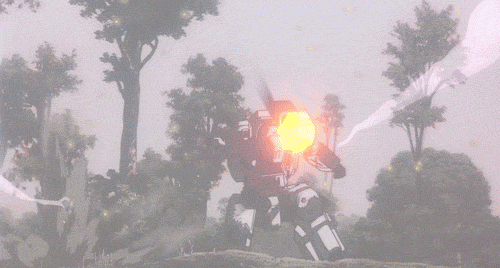
I also came across a much more in-depth interview where Oshii talks to Hayao Miyazaki. It’s a remarkable interview, as much for getting a sense of Miyazaki’s worldview as Oshii’s (also: Miyazaki is quite mean! though Oshii hardly seems to mind). As far as the film, Miyazaki seems to think the film is decent entertainment, but seems unimpressed with the film’s stance:
Miyazaki: About the conversation between Arakawa and Goto about the false peace and war of justice, that enumeration of words, I thought that “here we go again, the Oshii tune as usual.” I thought that that’s what you’ve been saying all the time, but since they are fast-talking, we can not stop and think (while watching the movie). So, you have removed the organic agriculture, you have removed the debate at the Diet, in short, the most tiresome things in our daily life, the worldly nitty-gritty, you removed all those things, and created a computer game in the Oshii world. I saw the movie as such. Before I saw it, I had thought that Oshii-san’s book of thoughts might have come out, but (after I saw it), I thought that Oshii-san was in the mental state of moving to Izu to settle down to watch Tokyo. -laughs-
Oshii: That’s fairly close. -laughs-
Miyazaki: In that sense, it was interesting until I saw your hands. But the minute you set up the movie with more worldly settings so that it will have a more interesting conspiracy, such as, “it was the Clinton government’s trap to inflict economic damage on Japan, or to gain a political compromise (from Japan),” it further loses reality. America is also in a fix. If they do (fight), I feel that it will be a more stupid, violent, simple, kids’ brawl. Such as not buying Japanese cars anymore. But this is complicated, too. What about American cars with Japanese engines? -laughs-
I admit, my interest in this film was mostly spurred by fans talking about the impact of some of its scenes, so I’m looking forward to seeing what our take on this angle might be…
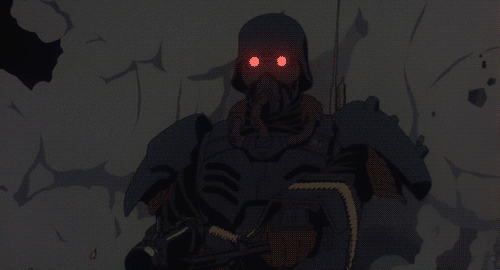
Meanwhile, as far as Kerberos, I admit I don’t know a great deal about this one. The series comprises a trilogy of films, two live action and finally one animated in Jin-Roh, which is the best-known of the series. The second you see the armour on the cover you know it’s about fascism lol. Beginning as a manga and spreading to Japanese and Korean film, anime, and a bunch of other media including even fucking… monographs (???), it’s set in a grim alternate 1950s, in which different branches of the state’s violent apparatus conflict with each other as well as the insurrectionary ‘Sect’. The background is surely the real political turmoil of that time, epitomised by events like the assassination of communist political figure Inejirō Asanuma by an ultranationalist with a sword.
For our purposes, the one that gets the most attention is the third film, Jin-Roh: The Wolf Brigade (1999), and the first to be made as anime - though it was actually remade as a Korean live-action film a couple of years ago. The film concerns a member of the Kerberos division (the guys in the SS-looking armour) who is put on trial after he hesitates to kill a girl carrying an IED, only to come into contact with someone who is allegedly her older sister after her release. The story is framed through Little Red Riding Hood; if you ask random youtube video essays I found, it does so in order to complicate an overly simple victim/villain binary but idk that might just be that guy’s take (for my part, it seems pretty obvious that the guys in nazi armour are the bad guys and it’s probably good to blow them up).
I won’t be screening this tonight bc, ngl, no matter how gorgeously it’s shot and animated, the heavy fash imagery makes me uneasy and I want to see what it’s doing with it!
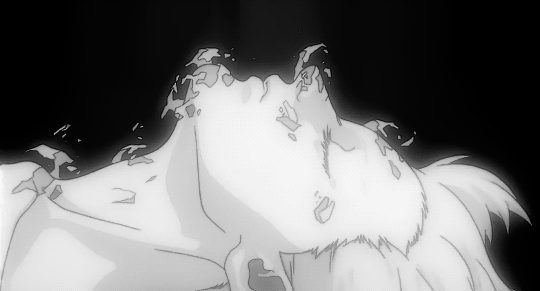
Oh yeah, and in between making Patlabor 2 and Jin-Roh, Oshii did a little number called Ghost in the Shell. More on that next week! But GitS is notable for many things: meticulous direction, stunning imagery (Production IG absolutely killing it on the animation front), and overall effectively distilling Shirow’s chaotic manga down to Oshii’s preferred philosophical themes. It’s no surprise that it’s the film that got him international recognition.
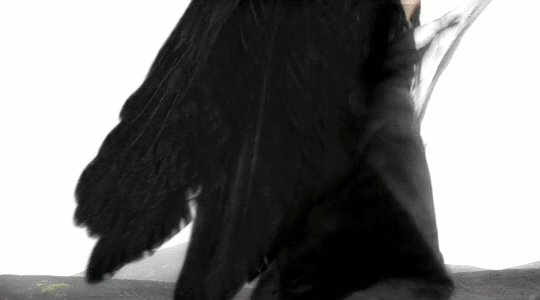
In the 2000s, Oshii went back to live action, directing a fascinating-sounding movie called Avalon about a VR game in 2001, followed by the psychedelic Assault Girls in 2009 (which I’ve heard good things about from @velocityvsreality who is far more familiar with the tokusatsu world!) He also played around with CG imagery, as in Mezame no Hakabune/Open Your Mind (2005), which was a sequence of psychedlic visuals set to Kenji Kawai’s fantastic music that played in iMax theatres. Like much of Oshii’s films, it’s concerned with evolution, there are military themes, it puts striking imagery above all else… it’s a cool watch.
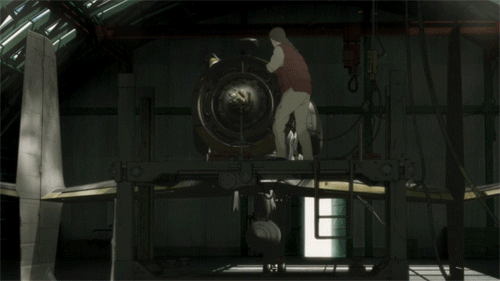
In terms of anime, though! He made a sequel to GitS, titled Innocence, which was sadly not all that successful. In 2009, though, he started on another original story: The Sky Crawlers, depicting a world in which strangely emotionless clone children fly WWII-like aeroplanes as a sublimated form of war. As with many of Oshii’s films, it’s slow and contemplative, meticulous with tech… it has, sadly, been years since I watched this film so I can’t immediately summarise what it does with the theme, but I still remember it as creating a striking mood that stayed with me after the film.
The last decade has seen Oshii return once more to live action, working in scifi films and suspense thrillers, but I am running out of time to research these! But he is actually coming back to anime sometime presumably very soon, with the series Vladlove (a name that is palindromic when transliterated into Japanese) being announced as a kind of… yuri vampire comedy??? Definitely not something I expected given Oshii’s filmmaking habits so far, but I’m sure it’s gonna be one to watch!
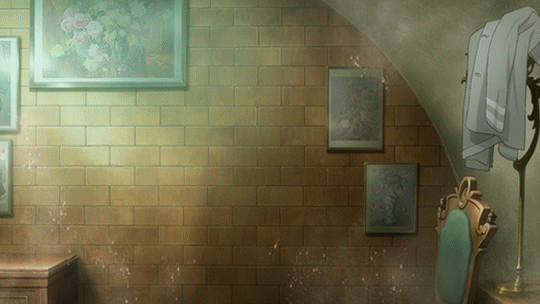
We have 15 minutes left for this Animation Night to commence at 7pm UK time, though I’ll probably leave it a little late so I can scribble out a title card. The place will be twitch.tv/canmom as usual! Hope to see you there, Oshii is a master of imagery and atmosphere and will surely give us lots to discuss!
Playlist is gonna be:
- Mezame no Hakabune (while people are coming in and I draw a title card ><)
- Angel’s Egg
- Patlabor 2
- The Sky Crawlers
(and next week, more Oshii with GitS night!! want to make that one really special)
turns out jin-roh was precisely the one kerberos film that oshii didn’t direct. i just assumed it was him since 1. it’s his franchise 2. the way it’s been described totally fits his directing proclivities (slow pace, political drama, slightly inscrutable metaphors, militarised police force, striking imagery, production I.G. sakuga) so… rip. that’ll teach me to write these things the day of the screenings!
angel’s egg kicked as much ass this time as last time. not that I really understood it any better on a thematic or plot level, but I adore the imagery it shows you.
patlabor 2… v cool to finally see this. i need to watch it again though bc a whole lot of it is talking heads scenes and i just did not have the concentration to participate in chat and keep up with the whole unfolding geopolitical plotline, the arguments it was offering about war, etc.
oshii’s directing style puts a great deal of weight on anatomical realism, but in terms of acting, everyone is overwhelmingly reserved: movements are slow and deliberate, without excess. this is definitely a deliberate choice; in other expensive aspects of animation, like the complexity of shots and compositing, he never really cuts corners. this approach was especially evident in this film. there are many extremely long shots of people talking in a car, or while standing at an aquarium, where all the weight is carried by the dialogue and atmosphere. I think that needs a certain overhead to process.
sky crawlers was a lot of fun to watch again. holds up very well - and this time i could see enormous thematic parallels to eternal fave nier automata, though it goes for the opposite end of the emotional scale to yoko taro, mostly quietly unsettling rather than dramatic outpouring of trauma. quite a lot of parallels between these two guys honestly, in terms of imagery and preoccupations. yoko taro tends to be more my speed bc I like to be made to feel, but it’s cool to draw a few more links in that whole milieu!
Comments